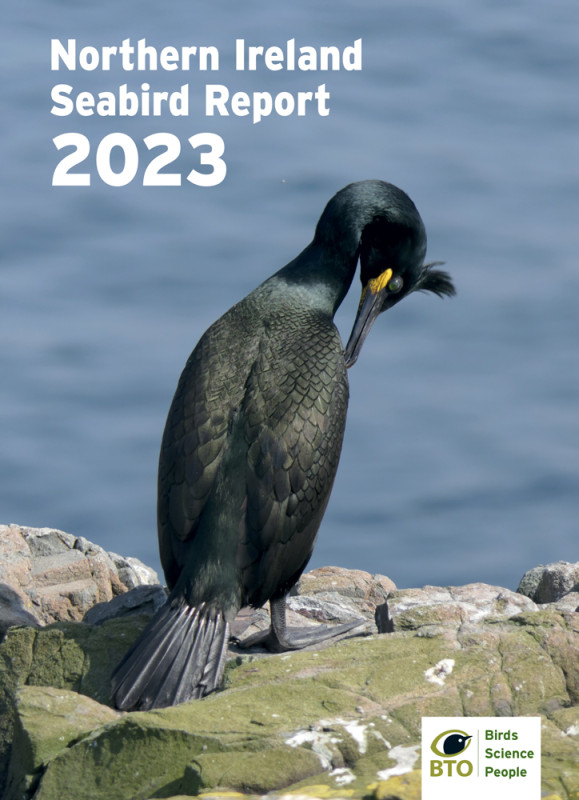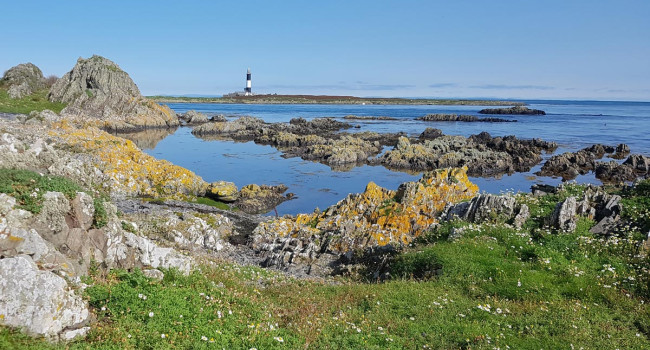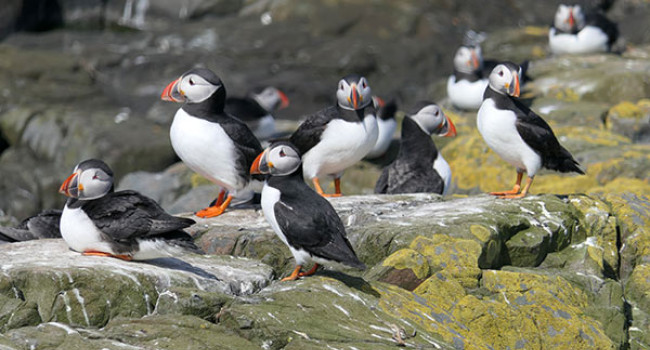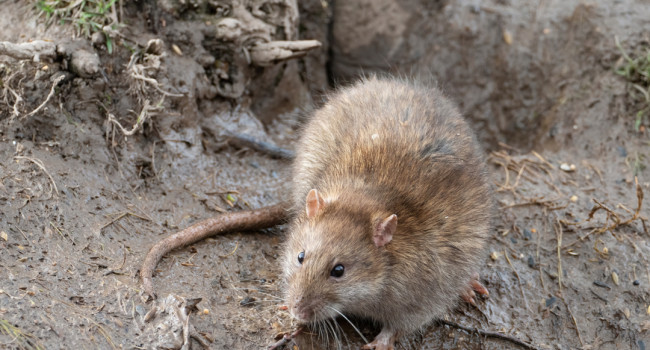Northern Ireland Seabird Report 2023
Published: April 2024
Publisher: British Trust for Ornithology
ISBN: 978-1-912642-66-3
Download article 2.06 MB application/pdf
This is the 11th edition of the Northern Ireland Seabird Report, covering the 2023 breeding season.
The report is the published outcome of the work of the Northern Ireland Seabird Network – a network of volunteers, researchers and organisations – coordinated by the Northern Ireland Seabird Coordinator, and funded by the Northern Ireland Environment Agency (NIEA).
The report includes detailed information about the population trends and breeding success of seabirds in Northern Ireland, over the 2023 breeding season. Notably, Fulmar and Kittiwake populations are reported to be experiencing continued declines, while Guillemot, Common Gull and Herring Gull populations show increases at most breeding sites.
Low productivity was reported in Black-headed Gulls, Sandwich Terns and Common Terns, likely due to the impacts of highly pathogenic avian influenza (HPAI). Although Black-headed Gulls make up the majority of confirmed HPAI mortality cases in Northern Ireland in 2023, other birds significantly affected include terns, Kittiwakes and auks.
A contributor report about HPAI in Northern Ireland by Ronan Owens (Higher Scientific Officer, DAERA, NIEA) details developments in environmental organisations’ responses to HPAI in 2023, including cross-sector communication, improved surveillance and monitoring of HPAI impacts, and improved online systems for the public to report dead birds.
Monitoring reports for Strangford Lough and the Outer Ards are included, as well as several additional contributor articles:
- Copeland gull censuses, by Roisin Kearney (Assistant Conservation Officer, RSPB). The Copeland Islands host one of the largest mixed gull colonies in Northern Ireland, with significant numbers of Lesser Black-backed Gulls and Herring Gulls. The annual gull census was established in 2018; the article details the refinement of the methodology to date as well as the census results so far.
- Manx Shearwater tracking, by Patrick Lewin (DPhil Student, OxNav, Dept. of Biology, University of Oxford). Tracking the Manx Shearwaters that breed on Lighthouse Island (one of the three Copeland Islands) began in 2007. The article describes the history of tracking Manx Shearwaters from Copeland, including recent advances in technology that have allowed the tracking of fledgeling birds as well as adults of breeding age, and the impact of this research on the conservation of shearwaters.
- Puffin surveys on Rathlin, by Ric Else (Life RAFT Senior Research Assistant, RSPB). Rathlin Island hosts Northern Ireland’s largest seabird colony. The response of seabirds to the removal of introduced Ferrets and Brown Rats from Rathlin is currently being monitored, with a particular focus on Puffins. These birds are especially vulnerable to mammalian predators because of their burrow nests. The article describes the challenges associated with calculating a population estimate, monitoring productivity and mapping the distribution of this species, and how these are being addressed in seabird surveys on Rathlin.
Or, browse historical Northern Ireland Seabird Reports >
Notes
This report is the published outcome of the work of the Northern Ireland Seabird Network of participants, overseen by the British Trust for Ornithology (BTO) on behalf of the Northern Ireland Environment Agency (NIEA).
As always, at the core of the Seabird Network in Northern Ireland is our surveyors. Some work for government bodies such as NIEA, and others on behalf of Non-Government Organisations (NGOs) such as the Royal Society for the Protection of Birds (RSPB), Ulster Wildlife and the National Trust. All are important contributors through the provision of data for 2023 and previous years and provide advice and guidance from their expert staff. We are grateful for their co-operation and assistance.
Many other surveyors are volunteers who give their time freely to help. The amount and quality of work undertaken by volunteers in Northern Ireland is exemplary, and we are fortunate that many enthusiastic and talented people are part of the Northern Ireland Seabird Network.
We would like to thank everyone who has contributed to this report. Huge thanks also go to NIEA for their continued financial support for both the Seabird Coordinator role and for the production of this annual report.








Share this page